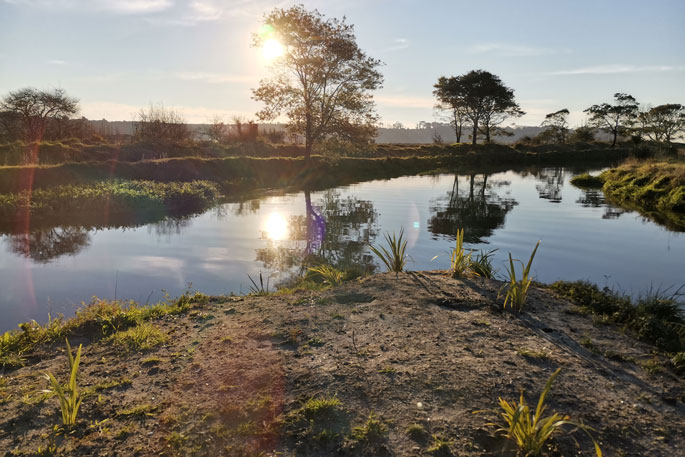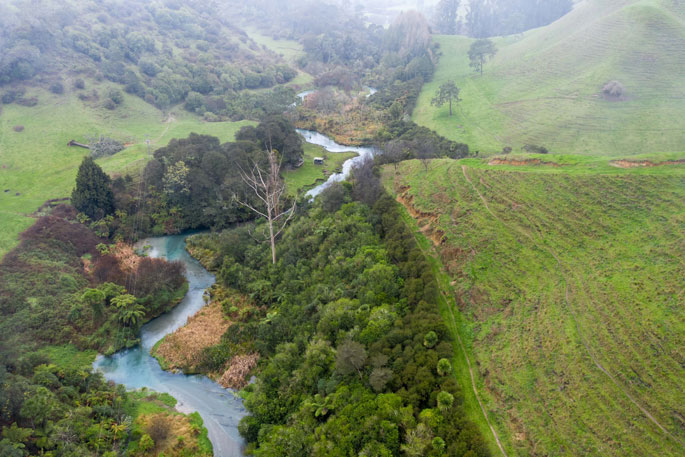Rural landowners living near what people describe as the badly degraded Waihi Estuary, are being encouraged to attend an upcoming workshop and join the collective effort to restore its ecological health.
What was once a main food bowl for the coastal Bay of Plenty is now considered one of the most polluted estuaries in New Zealand thanks to the intensification of land use over time and a severe decline in wetland habitat throughout the catchment.
Shellfish gathering is regularly unsafe in the estuary, as faecal coliform concentrations can be 430 per cent higher than what's considered safe to consume, while elevated levels of nitrogen, phosphorus, E. coli and sediment have severely impacted the ability of native plants, fish and birds to survive., says a statement released by Wai Kōkopu.
In late 2020, landowners from across the catchment came together to form an incorporated society called Wai Kōkopu, with the vision to work with tangata whenua, environmental groups and the wider community to restore the health of the catchment's main rivers and streams (Kaikōkopu, Whārere, Puanene, Pōngakawa and Mangatoetoe) – and ultimately, the Waihi Estuary itself.
On Wednesday, April 6, Wai Kōkopu will host an event at the Pōngakawa Hall (9am-3pm) to inform and inspire local landowners from the wider catchment to get involved in the conservation programme.
'Every landowner in the catchment is having some sort of impact on the freshwater that's ultimately feeding the estuary so it takes a catchment-wide approach to remedy that,” explains Wai Kōkopu's Restoration Manager Tom Anderson.
'This workshop is a great opportunity to meet like-minded landowners, see what's already been going on in the catchment, and find out more about what funding is available for farm system improvements and planting projects as well.”

The Waihi Estuary catchment comprises 34,000ha in total and runs from the ranges just below Rotorua's Lake Rotoiti and Lake Rotoehu to the coast at Pukehina.
The catchment has around 65 dairy farms, 220 orchards, and 50 drystock properties, along with forestry, and rural communities such as Pōngakawa, Little Waihi and Paengaroa.
The upcoming workshop will feature a panel of experts to lead discussions on important issues for local farmers and growers such as matching land use to land capability, enhancing farm system resilience, soil health and the latest freshwater science for the estuary.
Wai Kōkopu is already working with 15 local 'Lighthouse Farms” to model their financial performance and environmental footprint.
'We're working really closely with those particular farmers to tweak and re-consider their farm systems to show that people can still farm profitably while having a lighter footprint on the land. During this workshop our Lighthouse farmers will speak to rural landowners and we can feedback what we've learned through that programme more widely to the catchment.”
Anderson says co-funding is available through the Bay of Plenty Regional Council alongside funding partners like BayTrust and TECT to help pay for riparian planting, containment bunds, drain restoration and wetland construction, among other options.
'There are definitely ways you can make important changes at quite a low cost,” he says.
Five sub-catchments groups have been formed under Wai Kōkopu along geographical boundaries, and the April workshop will be the first time all participants have come together to discuss the project and collaborate.
'We're looking forward to bringing the community together and working to replenish the whenua and health of the Waihi Estuary.”
Rural landowners who are interested in attending are asked to RSVP via Wai Kōkopu's Eventbrite page. Note tickets are free of charge. Wai Kōkopu Sub-Catchment Group Workshop Tickets, Wed 6/04/2022 at 9:00 AM | Eventbrite



1 comment
Title correction
Posted on 26-03-2022 11:24 | By SonnyJim
FORGOT to add: *** Note the extensive riverside planting undertaken by the local landowners over the past 15 years.
Leave a Comment
You must be logged in to make a comment.